
Asiatic Lily (White) - Bulbs
(MRP Inclusive of all taxes)
- Shipping ₹79 for entire order
- Dispatch in 7 days
- Country of origin: India

(MRP Inclusive of all taxes)
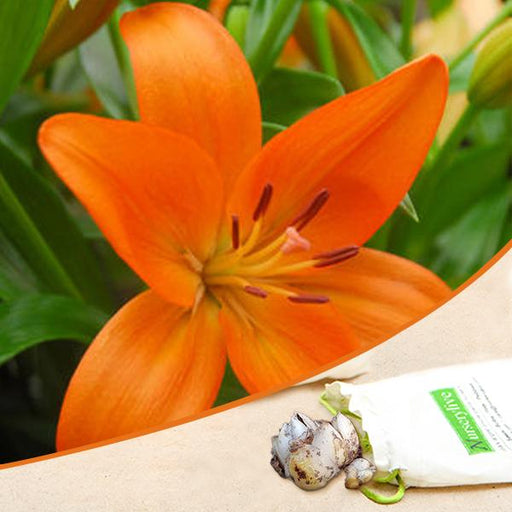 Sold out
Sold out
Asiatic Lily (Orange) - Bulbs The Asiatic Lily (Orange) is a stunning addition to any garden, known for its vibrant, fiery blooms that bri...
View full details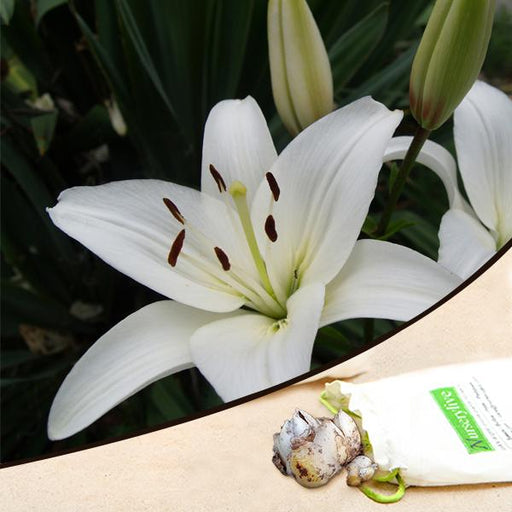 Sold out
Sold out
Asiatic Lily (White) - Bulbs The Asiatic Lily (White) is a stunning perennial flower that brings elegance and beauty to any garden. Known ...
View full details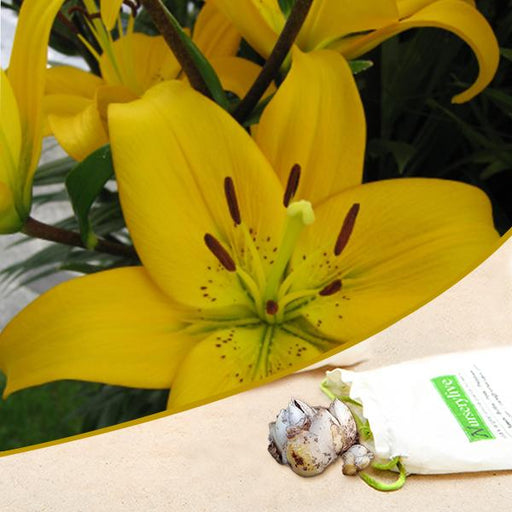 Sold out
Sold out
Malesco Asiatic Lily (Yellow) - Bulbs (Set of 5) Brighten your garden with the stunning Malesco Asiatic Lily (Yellow). Known for its vibra...
View full details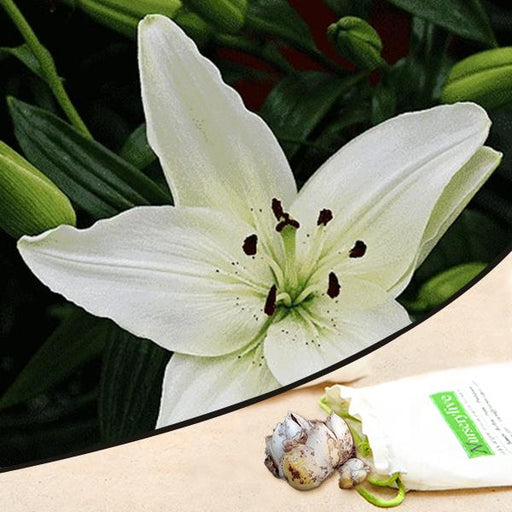 Sold out
Sold out
Tavira Asiatic Lily (White) - Bulbs (Set of 5) Transform your garden into a serene oasis with the stunning Tavira Asiatic Lily (White). Kn...
View full details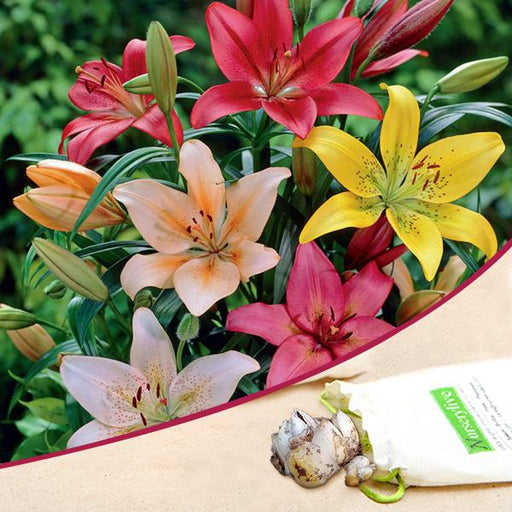 Sold out
Sold out
Asiatic Lilies (Mix Color) - Bulbs (Set of 5) Transform your garden into a vibrant oasis with our Asiatic Lilies (Mix Color) bulbs. This s...
View full details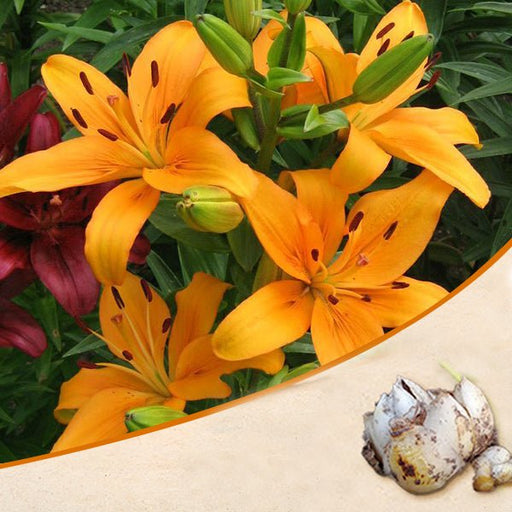 Sold out
Sold out
Antequera Asiatic Lily (Orange) - Bulbs (Set of 5) Transform your garden into a vibrant oasis with the Antequera Asiatic Lily in stunning ...
View full details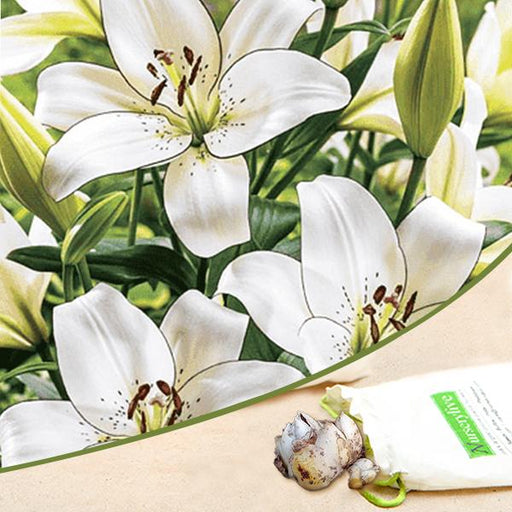 Sold out
Sold out
Eyeliner Asiatic Lily (White) - Bulbs (Set of 5) Transform your garden into a stunning floral display with our Eyeliner Asiatic Lily bulbs...
View full details
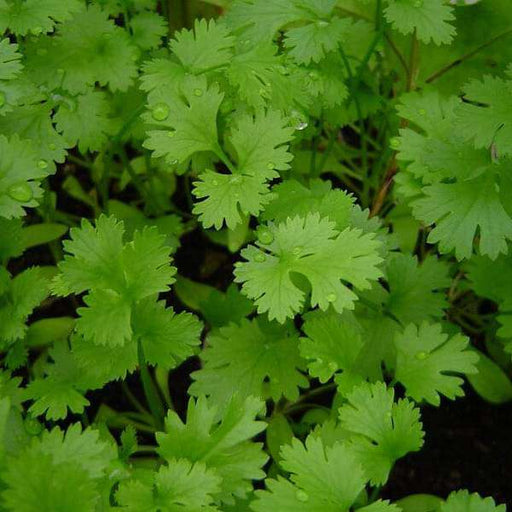 Save 25%
Save 25%
Coriander Panipat - Desi Vegetable Seeds Coriander Panipat is a premium variety of coriander seeds, cherished for its aromatic leaves and ...
View full details
 Save 25%
Save 25%
Balsam Double Mixed Color - Desi Flower Seeds Discover the vibrant beauty of Balsam Double Mixed Color - Desi Flower Seeds, a delightful a...
View full details
 Save 25%
Save 25%
Cherry Tomato, Cherry Tomato Honey - Vegetable Seeds Discover the delightful world of Cherry Tomato Honey seeds, perfect for home gardener...
View full details
 Save 25%
Save 25%
Tomato Pusa Ruby - Desi Vegetable Seeds The Tomato Pusa Ruby is a premium variety of tomato seeds, renowned for its vibrant red color, jui...
View full details
 Save 25%
Save 25%
Spinach All Green - Desi Vegetable Seeds Introducing the Spinach All Green - Desi Vegetable Seeds, a premium variety of spinach that thriv...
View full details
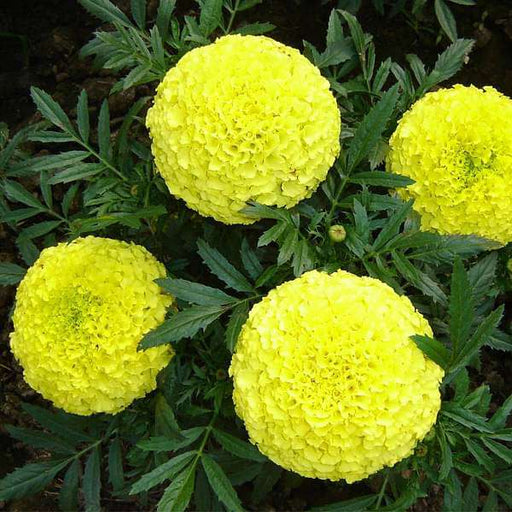 Save 25%
Save 25%
Marigold Pusa Basanti - Desi Flower Seeds Discover the vibrant beauty of Marigold Pusa Basanti, a cherished flower in Indian gardens. Know...
View full details
 Save 25%
Save 25%
Tomato Ped - Desi Vegetable Seeds Introducing the Tomato Ped - Desi Vegetable Seeds, a premium selection of heirloom tomato seeds that pro...
View full details
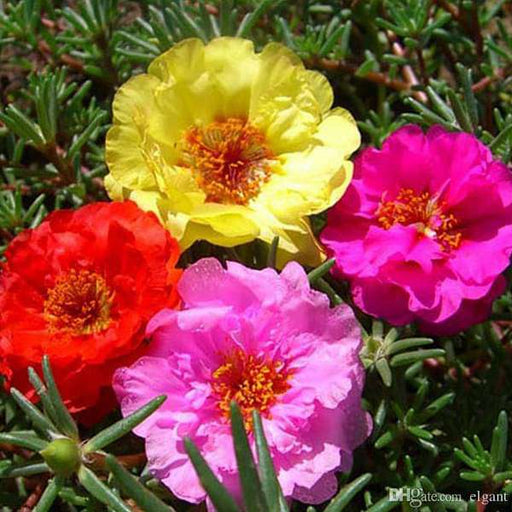 Save 25%
Save 25%
Portulaca Double Mixed Color - Desi Flower Seeds Discover the vibrant beauty of Portulaca Double Mixed Color, a stunning collection of Des...
View full details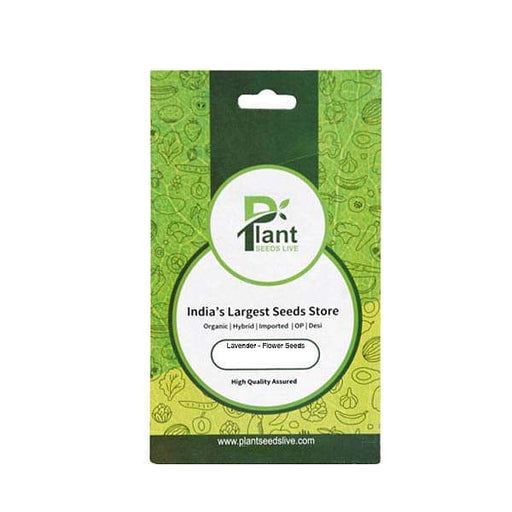
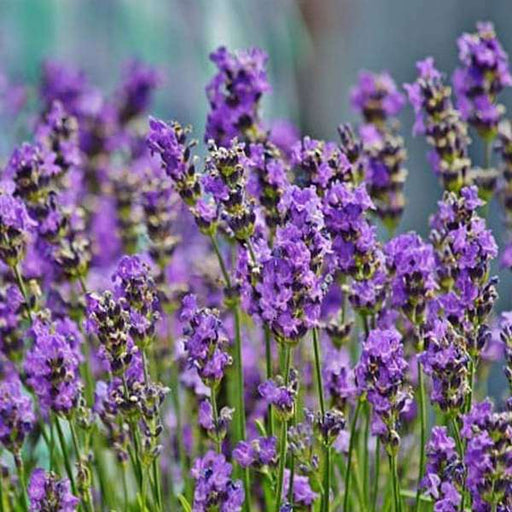 Save 35%
Save 35%
Lavender - Flower Seeds Transform your garden into a fragrant oasis with our premium Lavender Flower Seeds. Known for their stunning purpl...
View full details
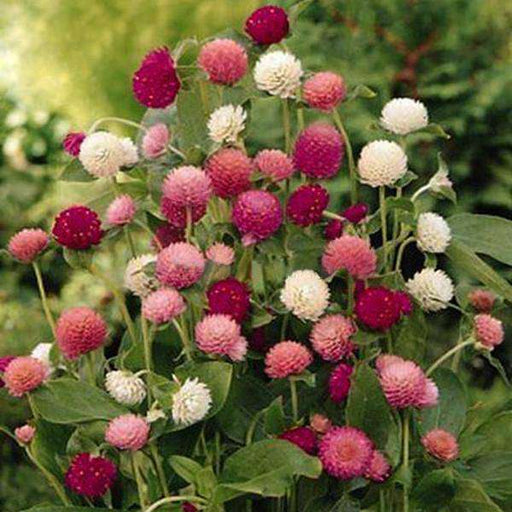 Save 25%
Save 25%
Gomphrena Mixed Color - Desi Flower Seeds Discover the vibrant beauty of Gomphrena Mixed Color - Desi Flower Seeds, a delightful addition ...
View full details
 Save 35%
Save 35%
Best 6 Plants for Perfect Indoor Garden Transform your living space into a lush oasis with our curated collection of the Best 6 Plants for a...
View full details
 Save up to 50%
Save up to 50%
Mini Succulent Garden Pack Transform your space with our Mini Succulent Garden Pack, featuring a delightful collection of 4 any variety beautiful s...
View full details
 Save 30%
Save 30%
5 Best Fragrant Plants Transform your garden or indoor space into a fragrant paradise with our curated selection of the 5 Best Fragrant Plants. Th...
View full details
 Save 24%
Save 24%
Set of 2 Bonsai Looking Grafted Adeniums Transform your indoor or outdoor space with our exquisite Set of 2 Bonsai Looking Grafted Adenium...
View full details Save 45%
Save 45%
Top 4 Die Hard Succulents Pack Transform your indoor or outdoor space with our Top 4 Die Hard Succulents Pack, featuring a curated selecti...
View full details
 Save 30%
Save 30%
5 Best Indoor Plants Pack Transform your living space into a lush oasis with our '5 Best Indoor Plants Pack.' This carefully curated collection fe...
View full details
 Save 25%
Save 25%
Set of 4 Evergreen Air Purifier Plant Pack Transform your indoor space into a lush, green oasis with our Set of 4 Evergreen Air Purifier Pla...
View full details| SrNo | Item Name | Qty |
|---|---|---|
| 1 | Asiatic Lily (White) - Bulbs | 3 |
The Asiatic Lily (White) is a stunning perennial flower that brings elegance and beauty to any garden. Known for its striking white blooms, this lily variety is a favorite among gardeners and floral enthusiasts alike. With a height of 24 to 36 inches, these lilies bloom in mid-summer, creating a breathtaking display that attracts pollinators and enhances your outdoor space.
What makes the Asiatic Lily special is its ability to thrive in various climates and soil types, making it a versatile choice for gardeners. Its pure white petals symbolize purity and renewal, making it a popular choice for weddings and special occasions. Additionally, these lilies are known for their resilience and long-lasting blooms, ensuring your garden remains vibrant throughout the season.
Special features of the Asiatic Lily include its fragrant flowers and ability to grow in full sun to partial shade. These bulbs are also deer-resistant, making them an excellent choice for gardens in areas with wildlife. With proper care, they can multiply and return year after year, providing a stunning display with minimal effort.
Asiatic Lilies contribute positively to the environment by attracting pollinators, which are essential for the ecosystem. Their ability to thrive in various conditions also makes them a sustainable choice for gardeners looking to enhance biodiversity in their gardens.
If you think caring for an Asiatic Lily is like babysitting a cactus, think again! These beauties thrive on a little TLC. They love well-drained soil and a sunny spot, so make sure they’re not stuck in the shade like a wallflower at a dance. Water them regularly, but don’t drown them—think of it as giving them a refreshing spa day, not a swim in the deep end. With the right care, your lilies will bloom like they’re auditioning for a floral fashion show!
Planting Asiatic Lily bulbs is like setting the stage for a floral performance. Choose a spot with good drainage, dig a hole about six inches deep, and place the bulbs pointy side up—no one likes a flat performance! Cover them with soil, give them a gentle pat, and water them in. It’s like tucking them into bed for a long winter’s nap, but when spring arrives, they’ll wake up ready to dazzle the world!
The flowering season of Asiatic Lilies is like the grand opening of a flower shop—everyone wants to see the spectacle! Typically, these lilies bloom in early to mid-summer, showcasing their stunning white petals that can brighten even the gloomiest of days. It’s the time when your garden transforms into a floral fiesta, attracting bees, butterflies, and the occasional nosy neighbor. So, get your cameras ready; these blooms are Instagram-ready and will have your followers buzzing with envy!
Storing your Asiatic Lily bulbs is like keeping your favorite snacks hidden from roommates—strategic and essential! After the blooming season, let the foliage die back naturally, then carefully dig up the bulbs. Store them in a cool, dry place, preferably in a paper bag or a cardboard box—no plastic, please! Think of it as giving them a cozy winter retreat until they’re ready to shine again. Just remember, out of sight doesn’t mean out of mind; check on them occasionally!
When it comes to companion plants for Asiatic Lilies, think of it as forming a floral buddy system. Pair them with low-growing perennials like daylilies or hostas that won’t overshadow their elegance. These companions will not only enhance the beauty of your garden but also create a harmonious ecosystem. Just like a good buddy, they’ll help keep pests at bay and provide a supportive backdrop for your lilies to strut their stuff!
Dealing with pests on your Asiatic Lilies is like playing a game of whack-a-mole—just when you think you’ve got it under control, another one pops up! Keep an eye out for aphids and lily beetles, and don’t hesitate to take action. Neem oil is your best friend here; it’s like a superhero cape for your plants. A little spray here and there will keep those pesky critters at bay, allowing your lilies to bloom without interruption!
The soil requirements for Asiatic Lilies are like finding the perfect pair of shoes—comfort is key! They prefer well-drained, loamy soil that’s rich in organic matter. Think of it as a luxurious bed for your bulbs to snuggle into. If your soil is heavy clay, mix in some compost or sand to improve drainage. Remember, happy roots lead to happy blooms, and no one wants a grumpy lily sulking in soggy soil!
Asiatic Lilies come in a dazzling array of varieties, each with its own personality—like a floral family reunion! From the classic white to vibrant yellows and pinks, there’s a lily for every garden style. Some are tall and stately, while others are petite and charming. Mixing different varieties can create a stunning visual display, turning your garden into a colorful tapestry that even Picasso would envy. So, don’t be shy—experiment and let your garden’s personality shine!
Fertilizing your Asiatic Lilies is like giving them a gourmet meal—because who doesn’t love a good feast? Use a balanced fertilizer in early spring to kickstart their growth, and again after they bloom to help them recharge for next year. Just remember, moderation is key; too much fertilizer can lead to a growth spurt that leaves them flopping over like a party guest who’s had one too many. A little love goes a long way!
Propagating Asiatic Lilies is like starting a flower empire—who wouldn’t want more of these beauties? You can divide bulbs every few years to create new plants. Just dig them up, separate the bulbs, and replant them in their new homes. It’s like giving your lilies a chance to expand their social circle! With a little patience and care, you’ll have a flourishing garden that’s the talk of the neighborhood.
Designing a garden with Asiatic Lilies is like curating a gallery of nature’s finest art. Position them in clusters for a bold statement or intersperse them with other perennials for a more relaxed vibe. Consider height and color when planning your layout—after all, you want your lilies to shine like the stars they are! With a little creativity, your garden will be the envy of all, attracting admirers and maybe even a few garden gnomes!
Asiatic Lily (White) bulbs are the underground treasures that bloom into stunning white lilies. These beauties are known for their vibrant colors and delightful fragrance, making them a favorite among gardeners. Plant them in well-drained soil, and watch as they transform your garden into a floral wonderland. Who knew bulbs could be so glamorous
Planting Asiatic Lily (White) bulbs is as easy as pie! Choose a sunny spot with well-drained soil, dig a hole about 6 inches deep, and place the bulb with the pointed end up. Cover it with soil, water it gently, and voilà! You’re on your way to a garden that would make even Mother Nature jealous.
Timing is everything, darling! The best time to plant Asiatic Lily (White) bulbs is in the spring or fall. Spring planting gives them a head start for summer blooms, while fall planting allows them to chill underground until they burst forth in glory come spring. Either way, you’ll be the talk of the garden party!
Watering Asiatic Lily (White) bulbs is like giving them a spa day! Keep the soil consistently moist but not soggy. A good rule of thumb is to water them once a week, or more during dry spells. Just remember, too much water can lead to bulb rot—nobody wants that drama in their garden!
Asiatic Lily (White) bulbs are picky eaters when it comes to soil. They thrive in well-drained, loamy soil that’s rich in organic matter. A little sand or perlite can help with drainage, ensuring your bulbs don’t feel like they’re drowning. Think of it as creating a five-star resort for your lilies!
Patience is a virtue, my friend! Asiatic Lily (White) bulbs typically take about 60 to 90 days to bloom after planting. So, if you’re counting down the days, grab a cup of tea and enjoy the anticipation. The wait will be worth it when those stunning white flowers finally grace your garden!
Absolutely! Asiatic Lily (White) bulbs are perennial stars, returning year after year to dazzle your garden. With the right care, they’ll multiply and spread their beauty, creating a stunning display that’ll have your neighbors green with envy. Just think of them as the gift that keeps on giving—no wrapping paper required!
Yes, you can! Asiatic Lily (White) bulbs are quite the social butterflies and can thrive in pots. Just ensure your container has good drainage and use quality potting soil. They’ll add a touch of elegance to your patio or balcony, proving that even small spaces can be fabulous!
Good news for gardeners with a deer problem! Asiatic Lily (White) bulbs are generally deer-resistant, thanks to their slightly toxic nature. While no plant is completely safe from a hungry deer, these beauties are often left alone. So, plant with confidence and let your lilies shine without the fear of being a deer’s dinner!
Asiatic Lily (White) bulbs can attract a few uninvited guests, like aphids and lily beetles. Keep an eye out for these pesky critters, and don’t hesitate to take action. A gentle spray of insecticidal soap or neem oil can send them packing. After all, your lilies deserve a pest-free paradise!
Once your Asiatic Lily (White) bulbs have finished their show-stopping performance, it’s time for a little TLC. Allow the foliage to die back naturally, as it helps nourish the bulb for next year’s blooms. Once it’s brown and crispy, trim it back, and give your bulbs a little rest. They’ll be back for an encore!